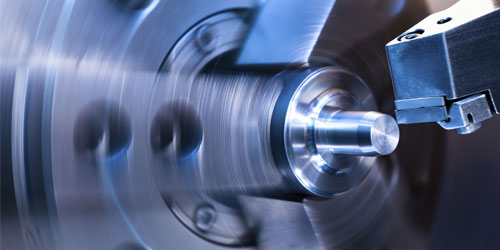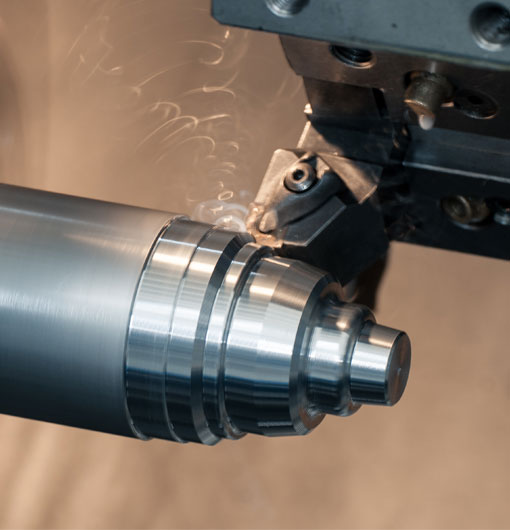A vital aspect of CNC (Computer Numerical Control) machining is the proper programming of toolpaths to meet the desired output, especially in turning operations. CNC turning is a subtractive metal cutting technique used to manufacture cylindrical parts with high precision. In this blog post, we will delve into the essential aspects of CNC part programming for turning operations and how it can improve efficiency and accuracy in creating intricate components.
Understanding CNC Turning Operations
CNC turning operations involve the removal of material from a spinning workpiece using a cutting tool. The cutting tool moves in a linear path, parallel to the axis of rotation, to produce a cylindrical shape with specified dimensions. This process is highly effective in producing parts that require rotational symmetry or have circular cross-sections. Some common applications include automotive parts, machine shafts, nuts, screws, and hydraulic components.
Defining CNC Part Programming for Turning
CNC part programming for turning entails the creation of a software toolpath, determined by a series of coordinates and commands, to direct the cutting tool precisely throughout the turning process. The fundamentals of the turning program involve specifying the tool type, selecting coordinates (X, Y, and Z axes), feed rate, spindle speed, and cooling parameters.
There are primarily two types of programming systems used for CNC turning:
1. G-code programming:G-code is the most widely used programming language for CNC machines. It is a series of alphanumeric codes that determine the movement (G-codes), functions (M-codes), and tooling operations.
2. Conversational programming:Also known as 'shop floor programming,' this method uses a more user-friendly interface which simplifies the programming process, reducing the need for deep technical know-how. Conversational programming usually offers graphical representation and built-in templates for common operations.
Tips for Accurate and Efficient CNC Part Programming
1. Choose the right software:Selecting a suitable programming software specifically designed for turning operations is crucial. Consider factors like compatibility with your CNC machine, user-friendliness, and integrated features, such as tool libraries, material libraries, and simulation.
2. Outlining the process:Draft a blueprint that represents the turning process and sequence of operations. This will help to minimize mistakes and redundancies.
3. Ensure proper tool selection:Selecting the most appropriate cutting tool parameters (e.g., geometry, material, size, and type) is critical for achieving smooth and accurate cuts during turning operations.
4. Optimize cutting parameters:To minimize errors and maximize surface finish, ensure proper setting of the cutting parameters, such as the feed rate, spindle speed, and depth of cut.
5. Customize toolpaths for material type:Different materials have varying machining properties. So, customizing the toolpaths based on the material type will help optimize machining efficiency.
The Role of Simulation in CNC Turning Programming
Before executing the CNC program for turning operations, it is crucial to run a simulation to identify and resolve any potential issues. Simulations enable the visualization of the toolpath, the detection of collisions, and the verification of dimensional accuracy. By conducting simulations, operators can avoid costly mistakes, improve machine performance, and save time during production.
Expanding Capabilities with Advanced CNC Part Programming Techniques
To harness the full potential of CNC turning, advanced programming techniques can be employed. These methods offer unique approaches and strategies for optimizing turning operations:
1. High-Speed Machining (HSM):HSM utilizes higher cutting speeds and faster feed rates to increase productivity. This technique requires a specific tool selection, customized toolpaths, and advanced programming.
2. Adaptive Roughing:Adaptive roughing, also known as dynamic milling or high-efficiency turning, focuses on maintaining consistent chip load and optimizing engagement angles. This method reduces tool wear and stress on the machine, resulting in improved cutting performance and extended tool life.
3. Toolpath Optimization:Optimize the shortest, most efficient toolpath to minimize cycle time. This can be achieved by using advanced programming techniques such as parallel machining, trochoidal milling, and axial-radial machining, among others.
In summary, mastering CNC part programming for turning operations involves understanding the operation process, choosing the right software, optimizing cutting parameters, tools, and techniques, and utilizing advanced programming methods. By applying these key concepts, manufacturing professionals can improve efficiency and accuracy in creating high-quality cylindrical parts on CNC turning machines.
cnc part programming for turning operation













